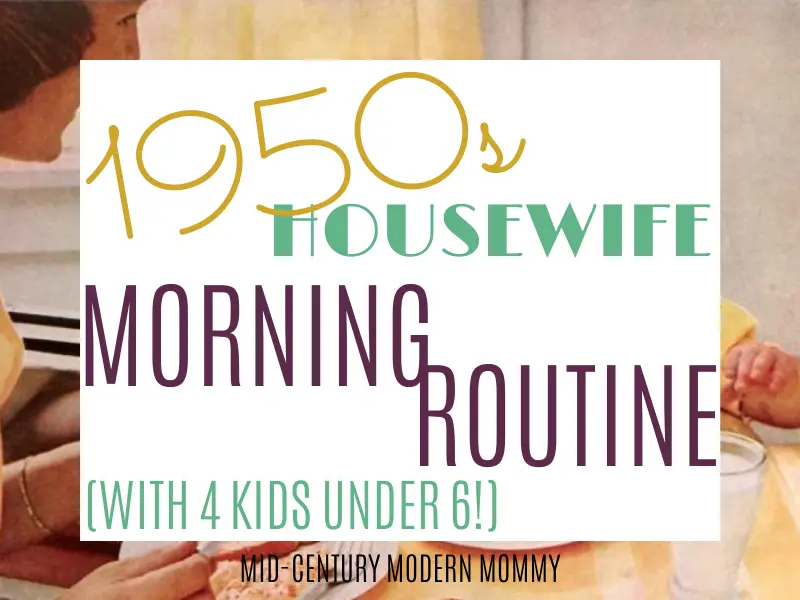Just the word schedule might make you cringe. After all, sometimes it feels like you just follow your toddler around all day cleaning up messes. In particular, if you follow attachment parenting or gentle discipline, you may have heard that a schedule will squash his spirit and make your days as stolid, regimented misery. But I am here to tell you that schedules are not only good for toddlers, they are good for moms, too! If you haven’t tried to schedule your toddler’s day, why not start now?
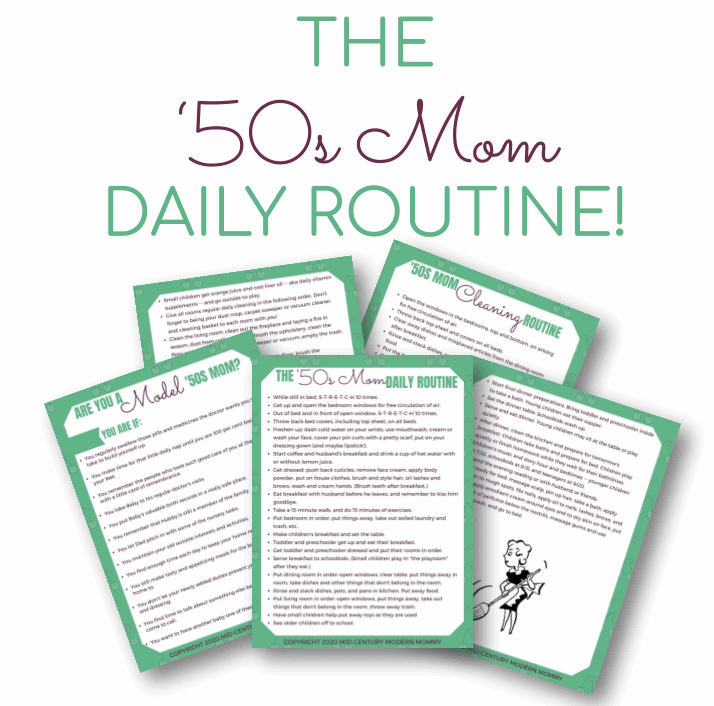
Get Our Mid-Century Mom Daily Routine FREE!
Scheduling Makes Your Life Easier
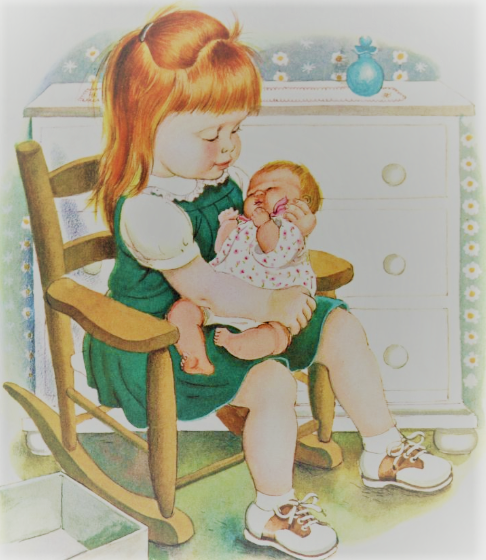
What does your morning look like?
You roll out of bed when you here your toddler start talking. You meant to get up earlier, but he kept waking up and crying last night. Other toddlers sleep through the night, why can’t he? Throwing on your robe, you pour him a bowl of cereal to distract him while you pull on some clothes. Turns out most of your clothes are dirty, so you grab an old T-shirt and yoga pants. No time to brush your hair or put on makeup — you hear the splat of a cereal bowl hitting the floor. Back to the dining room to face the first mess of the day. (You’re just glad it took this long!)
Now, think back to the 1940s and 1950s. Mom got up early. Her kids were taught from an early age to sleep through the night and eat at particular hours. (French mothers still do this almost every time, BTW!) She did her hair and makeup, and dressed right away, so she felt good about herself (self-care, check!). She had some quiet time to herself before she got her littles up and fed them a filling breakfast. When she fed her toddlers, she fed them by themselves, in the kitchen. She was able to work on prepping a hot lunch and a nice dinner, while she kept an eye on her little one.
Which of these women do you think will have the better day?
What’s the difference in these two women’s lives? SCHEDULING. No matter what modern parenting gurus call it, sleep training is really just a good, old-fashioned schedule for adapting the children to the parents’ life, rather than letting the child decide everything. Infants and toddlers need routines. Either they create a child-led routine (which will wear you out!) or they follow a parent-led routine (which will wear you out less!) When you schedule your toddler’s day, you provide structure that increases your child’s security.
Why are routines so important for your little ones? “It increases their sense of security because they know what’s coming next,” says Jean M. Thomas, M.D., clinical professor of psychiatry and behavioral science at The George Washington University School of Medicine and Health Sciences, in Washington, D.C. “The more secure toddlers feel, the more they can focus on things like learning, exploring, and playing . . . The repetitiveness of the experiences helps lay down critical pathways in the brain . . . When you repeat things over and over, you make those connections much stronger over time.”
Routines also do the same for us moms. Having a routine, an orderly way of doing things, means that our brains are requiring less processing power for our task, so we can pay attention to more important things. (According to Mihaly Csikszentmihályi, our brains can process about 110 bits of information every second. A conversation takes about 60 bits per second. I don’t know about you, but my toddlers are ALWAYS talking. I will take all the extra processing I can get!)
1950s Moms
I just love vintage schedules. I started where most people online do, with the inimitable Jen and her 1950s housewife schedule. But, when I found her schedule and her list, I already had three kids! I needed to know what mid-century moms were doing with their kids when they had three little kids at home. How did they keep up with everything?
I was raised with the Attachment Parenting model, but I was going crazy trying to follow that model with my own very lively little ones. I could not deal with my high-strung newborn, my special-needs 3yo, and still get the homeschooling done with my 5yo. (Mostly, it was the postpartum depression getting severely aggravated by my messy house.) I just needed a solution. I was told how awful sleep-training and scheduling was for the baby, but never told what to do to make AP easier for the mom!
Then, among my many random forays into vintage homemaking books, I discovered The Better Homes and Gardens Baby Book! I loved it! My 1948 edition covers diet plans and daily schedules from pregnancy through birth. It’s a gold mine of parenting tips and guidelines for the mid-century mom. It talks about discipline, sleep training, teaching orderliness and obedience, independent play, teaching good habits, feeding, and potty training. It’s fabulous! Most importantly, it teaches how to schedule your toddler’s day, and what to include, and why. (When you know why you are doing something, you know whether you need to change it!)
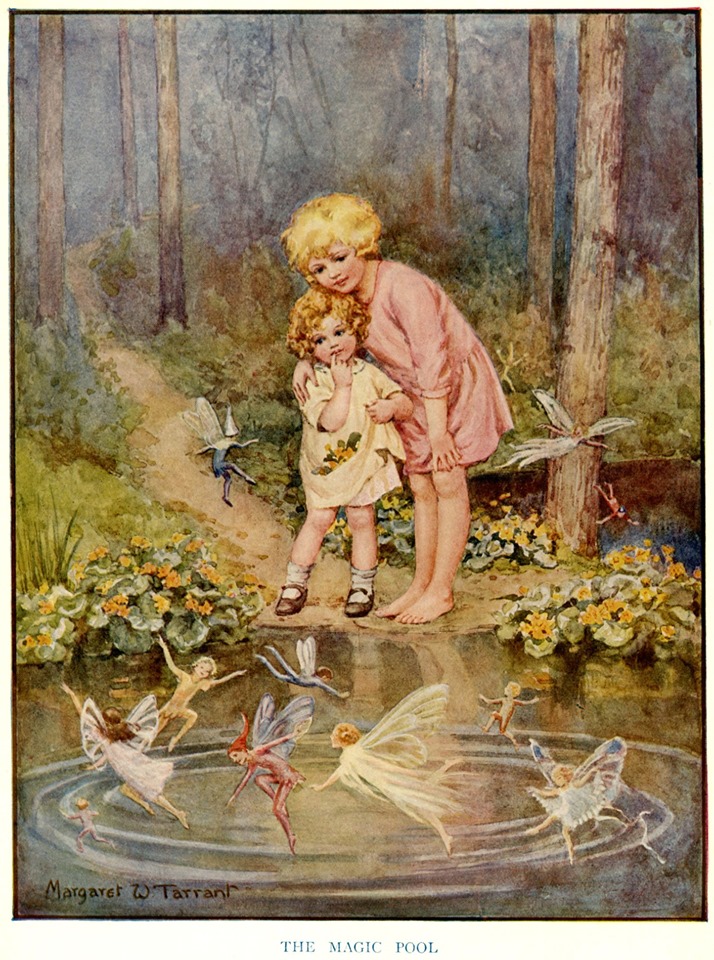
How to Schedule Your Toddler
So, how do you create a consistent schedule for your toddler? Well, hopefully, you have already been keeping your baby on a schedule. If you have, now is not the time to desist! If you haven’t, then be prepared for some difficulty. As far as schedules go, the sooner you start to schedule your toddler’s day, the better. (Yes, even babies do better with schedules.)
If you are just starting a schedule for your toddler, then the first thing to do is to work on feeding, sleeping, and playing habits.
Sleep
Begin with sleeping. Set a regular bedtime, a regular waketime, and at least one naptime. Plan for him to sleep for 12 hours at night, and a 1-2 hour nap (or 2 shorter naps). Plan this, even if it isn’t happening now! Your toddler needs sleep!
If your toddler doesn’t have set sleeping times already, you are probably used to tears and outrage when he goes to bed, and if he is used to you staying with him until he falls asleep, it is time to break that habit — but not by crying it out. Crying it out is a betrayal of your child’s trust. Whenever your baby cries hard, attend to him! But don’t necessarily cater to every little fuss and drama. The best method is to gradually wean your toddler from demanding your presence while he falls asleep.
First, make sure you have a routine for the hour or so before bedtime, especially if you don’t already have one. I recommend a traditional nursery bedtime routine: An hour before bed, give him his bath. Dress him in clean pajamas and bathrobe, then escort him to the kitchen (or his nursery) to eat a “nursery supper.” After supper, help him wash his face and hands, comb his hair, and brush his teeth. Then, tuck him into bed. Read a story aloud to him, turn out the light, and sing 2-3 lullabies. At no time should you let him start running around or being wild. Keep things calm.
Then, sit with him until he falls asleep that first night. He’ll cry, but sit there WITHOUT TRYING TO REASON WITH HIM. Just let him cry, pat his hand every so often, and don’t let him stand up. If he stands, lay him back down and tuck him back in. You may need to do this for another few nights, but eventually, he’ll accept the new routine. Then, you can start easing yourself out. Continue to sit with him, but move a little further from the bed and a little closer to the door each night. Eventually, you will be at the door. Explain that you will be right outside the door, and sit out there for a couple of nights. Soon, you leaving the room and falling asleep by himself will be normal. A similar system works for naptime, too.
Eating
Definite meal times and a great gift to your family. Children who know that they will be getting three meals a day, at certain times, and perhaps a snack in the afternoon, eat healthier than their peers. (The French do this, too!)
Healthy eating habits are eating at least a little bit of everything before you, and eating a well-balanced diet of all the food elements your body needs. As a mother, you are responsible for teaching him this. Part of this is having your own healthy eating habits. Don’t snack. Eat sit-down meals. Eat at regular times. Don’t eat in the car. Eat family meals.
To start teaching good eating habits, keep your baby (and toddler) in the kitchen with you to eat his meals, so he isn’t distracted. At the first of the meal give him the food he likes least. Give milk after some of the solid food has been eaten — unless milk is the least-liked food! Start with 1-4 tablespoons of any particular food, and limit his choices. Don’t let him decide what he will eat — he should eat all of it — but let him decide how much of each to eat. As long as he isn’t acting hungry, and he eats at least a tablespoon of each thing, he is eating well.
Now is also a good time to begin introducing slightly more texture in food. Not a lot — you don’t want him to choke — but more than just strained mush. Otherwise, he may reject all lumps later. So, in summary, the way to avoid as many food problems as possible is to address them all now. Let his food touch on the plate, teach him to accept lumps and textures, and teach him to eat at least some of everything on his plate.
Also, if he refuses his food, don’t urge, beg, or threaten. Just take it away. He should have the privilege of going hungry if he refuses food. Don’t cajole and bluster, and don’t turn it into a fight. Simply serve the next meal exactly as you normally would. The time to fight the food-waste battle will come later. If he fights you about eating the least-liked food, make it clear by actions that refusing one kind of food DOES NOT get you what you would rather have. Hunger is an excellent sauce, and your pediatrician can make sure he isn’t malnourished at his next visit!
(And, since what goes in must come out, this is a good time to start potty training.)
Playing
The best policy is to begin independent playtime in the first year. Even very young children can learn to amuse themselves — and should! But unless you want your expensive new dress thrown in the potty, or your best shoes used to hammer the walls, it is a good idea to confine independent playtime to either a playpen or a playroom. He should also have an outdoor playtime in a pen every day that the weather allows. Go to him when he cries, or needs you, but otherwise let him be.
Your baby should also have scheduled time with the rest of the family. Make sure that you plan times when he can explore the house outside of his pen (while supervised!). Also, plan a time for him to join the family in their activities. His whole world is his family, and he should get plenty of socialization from spending time with his family.
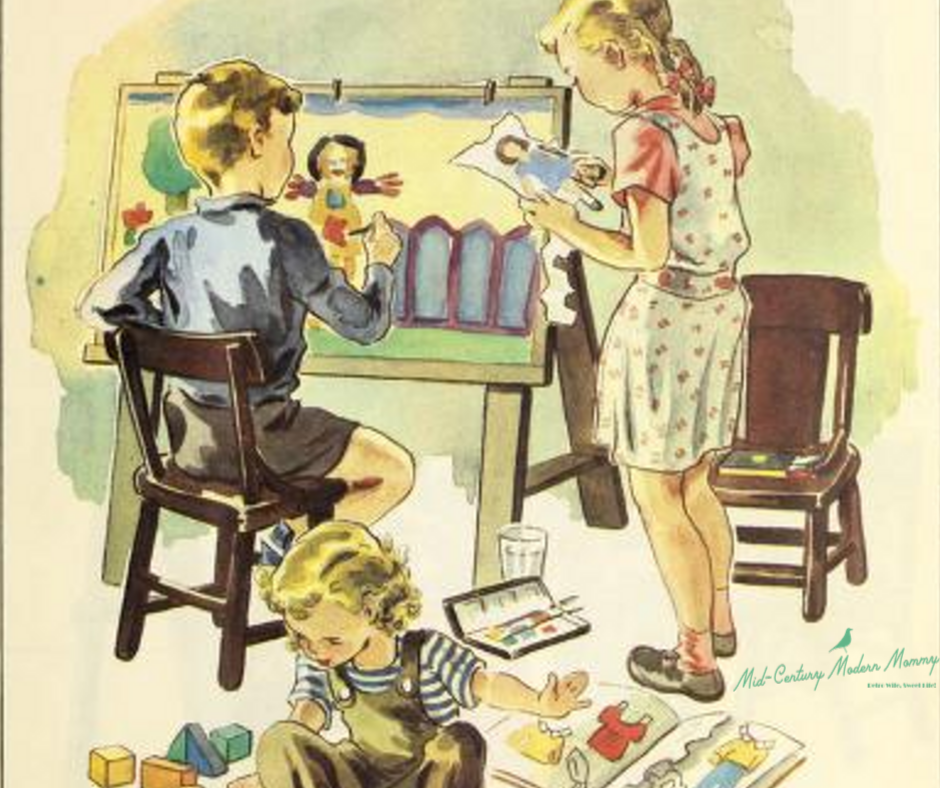
Making a Schedule
If you haven’t already read my post about how to make a schedule, it begins with an activity list. Your toddler will need time scheduled for all of these activities every day. In addition, you will need to be near enough and attentive enough to be consistent with discipline, so even during independent play, you will need to be in hearing distance. During this time, between 12 and 24 months, you are setting up obedience, consistency, orderliness, and self-control. If you can put the energy and focus into your toddler’s needs for this year, you will reap dividends.
Begin by writing in waking, eating and sleeping times. Then schedule in the independent playtimes, the family times, and the time-with-mother-about-the-house times. If there is anything left, try to see if perhaps it will squeeze into a family time. Make sure that all of his time is scheduled! There is nothing worse than an accidentally unsupervised toddler! Make sure that you schedule times that you will put him on the potty, if you are potty training.
For teaching orderliness, make him little hooks for his clothes and things to hang on after he takes them off. Have him help pick up his toys after playtimes. Teach him to wash his hands after using the potty, and to wash up and fix his hair when he gets up in the morning or after a nap. Teach him to wash before and after meals. Help him get used to boundaries, routines, and rules. He is learning, and there will be bumps, but your teaching in this season will pay off.
Would you like to see some vintage toddler schedules? Or are you more interested in the expert’s vintage recommendations for how to parent your toddler? Let me know in the comments! Or sign up below and get access to a whole set of vintage schedules for moms, babies, toddlers, and preschoolers!



